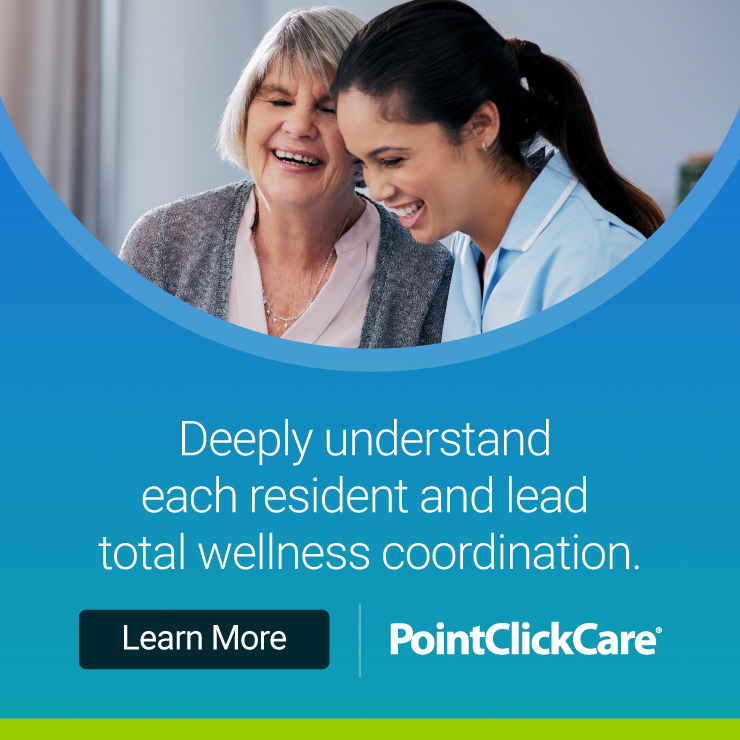The senior living space is ripe with innovative services and resources to help operators meet today’s challenges.
By Wendy D’Alessandro
Your residents are getting older and more medically complicated. And yet, they desire and expect to age in place. Easier said than done. Yet the senior living space is ripe with innovative services and resources to help operators meet today’s challenges.
With the right therapy provider and keen foresight, providers can help residents live longer, healthier lives while optimizing operations and shining in a challenging and saturated market.
A Fresh Look at 2019
The senior living industry is looking like a new frontier in 2019 and beyond.
-
The International Council on Active Aging® (ICAA) found 59% of staff and managers surveyed at senior living communities expect their business model to be based on a “wellness lifestyle with options for care” by 2023 rather than “care-based with options for wellness.”
-
The Centers for Medicare & Medicaid Services’ payment system (PDPM/PDGM) is changing and the first reform takes place in October 2019.
“This is an exciting time for operators who view these changes as opportunities,” said Christy Davis, Vice President of Clinical Strategies, at HealthPRO Heritage®, a Senior Housing Forum Partner and national provider of therapy management and consulting services for senior living, home health, and skilled communities.
Through a virtual care continuum and customized clinical strategies, senior living communities can enhance their residents’ experience by focusing on wellness and prevention. They can optimize care and financial stability by fostering network alliances with high-quality upstream and downstream providers.
These alliances are key, said Davis, and they need to form now before the payment reform in 2019 and 2020 takes place. “Those providers who have already established relationships and are tracking data to support quality and outcomes of their clinical initiatives will ultimately survive and thrive,” she said.
Where to Start?
Davis suggests providers think outside the box by collaborating with a therapy provider to:
-
Evaluate and compare the needs of residents with the services and programs currently available at the community. Ask questions such as: How might physical therapy help with pain management and weight loss? Can occupational therapists play a proactive role to enhance residents’ ability to complete activities of daily living and/or supporting incontinence programming? What joint initiatives can be implemented to better manage these key clinical areas? Ones that, if left unattended, often result in residents requiring a higher level of care?
-
Analyze trend reports and take stock of local market nuances to identify potential partners and to create a strategy that supports operational goals, addresses residents’ needs, and uses data and outcomes to define success.
-
Establish alliances. By optimizing operations through alliances, providers can attract new residents, decrease attrition to improve census and fiscal stability, foster cross-continuum/local network partnerships to generate organic growth, and provide data to demonstrate and reinforce optimal care/success to upstream and downstream partners.
For example, Peachtree Orthopedic and Sunrise Assisted Living, an alliance fostered by HealthPRO Heritage, offers the following:
Peachtree refers patients recovering from total joint surgery to Sunrise because they are assured patients will receive high-quality physical therapy – on a daily basis if needed – and they “trust the therapists to reach out if there are any problems or concerns,” said Leslie Pennington, RN, a case manager at Peachtree.
For Sunrise, Peachtree’s referrals address a familiar challenge in senior living: occupancy. “Short-stay residents from Peachtree help achieve budgeted occupancy and have the potential to convert to a future move-in,” explained Davis.
Customized clinical programming to optimize care and improve quality of life for residents.
Over time, clinical programming can help improve residents’ self-reliance, reduce safety risks and falls, increase activity levels, and mitigate hospital readmission/admission rates. Sample turn-key clinical programming includes:
-
Tangible services and programs offered by PT, OT, and ST and evidence-based practices
-
Post-surgical programming for residents returning home
-
Niche programs to support census growth
-
Tailored memory care programs
-
Wellness programs with educational events
-
Health literacy
HealthPro Heritage’s resources and programs are designed to promote independence, support aging in place, minimize health events and enhance well-being, and assure resident safety. Health literacy tools help residents and family members understand how to best manage chronic conditions to mitigate risk for hospital admission/re-admission.
It Takes a Village . . . Even in Senior Living
No senior living organization can go it alone. Trusted and valued therapy partners can give operators – even the smaller, one-site communities – access to a virtual care continuum and customized clinical strategies at no cost to the senior living community. It’s a win-win for everyone, but especially for residents expecting to age in place at your community.
Learn more about HealthPRO Heritage by calling 615-207-7149 or clicking below:
Download a PDF copy of this article by clicking on the button below:









